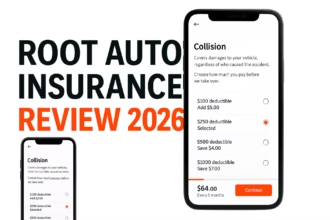Bonds can be an important component of a diversified investment portfolio, providing steady income and stability to balance out the volatility of stocks. However, the bond market can seem daunting to newcomers. This investing in bonds for beginners guide aims to demystify bonds, explaining the basics of how they work, their risks and returns, and how to invest in them.
What Are Bonds?

A bond is a fixed income investment where an investor loans money to an entity that borrows the funds for a defined period of time. The main bond features are:
- Issuer: The entity issuing or selling the bond to raise money, such as a corporation, government, or other organization.
- Principal: The amount of money being borrowed that must be paid back at maturity.
- Maturity Date: The date when the principal must be repaid to the bondholder.
- Coupon Rate: The annual interest rate paid on the borrowed amount by the bond issuer.
- Coupon Payments: Regular interest payments are made to the bondholder (typically semiannually).
The bond issuer raises capital by selling bonds in the primary market to investors. The investors then receive fixed coupon payments and eventually the return of the principal when the bond matures. Bonds can then also be traded between investors on the secondary market.
READ ALSO: The Top 5 Investment Grade Bond Index Funds for Your Portfolio
Why Invest in Bonds?
Here are some of the key reasons bonds are attractive to investors:
Income
The regular coupon payments provide a steady stream of income. This can supplement dividend income from stocks.
Diversification
Bonds tend to be less volatile than stocks. Adding bonds to a portfolio can lower overall risk.
Stability
During stock market downturns, bonds can provide stability and preserve capital. High quality bonds are unlikely to lose value.
Tax Advantages
Certain municipal and government bonds enjoy tax-exempt status on their interest income.
Defensive Positioning
When stock valuations are high, reallocating to bonds can provide safety. Shorter-term bonds reduce interest rate risk.
How Do Bonds Work?
To understand bonds better, let’s walk through a basic example:
- ABC Company needs to raise $10 million in capital for an expansion project
- ABC issues 10,000 bonds with a face value of $1,000 each to investors, representing $10 million raised
- The bonds have a 5 year maturity and 4% annual coupon rate
- Investors pay $1,000 per bond, loaning ABC $10 million total
- Investors receive $40 each year in interest (4% of $1,000 face value)
- After 5 years, ABC repays the $1,000 principal to investors
This shows the basic mechanism of a bond. The issuer raises capital, which it must repay, while investors receive fixed interest payments and eventually the return of the principal.
Features of Different Bond Types
There are many types of bonds, each with distinct features for investors to consider:
Corporate Bonds
Corporate bonds are issued by companies to finance operations, expansions, acquisitions, etc. Their key features are:
- Higher yields than government bonds to compensate for higher default risk
- Varying credit ratings based on the financial health of the issuer
- Issuer must pay principal and interest despite business conditions
Municipal Bonds
Municipal bonds are issued by local governments, cities, states, and counties to fund public infrastructure projects. Key features are:
- Interest income is exempt from federal taxes and may be exempt from state/local taxes
- Interest rates are lower than corporate bonds due to tax benefits
- Risk of default is very low
Government Bonds
Government bonds are debt securities issued by the federal government. Important attributes are:
- Extremely low risk of default compared to corporate bonds
- Interest income taxable at federal level but exempt from state/local taxes
- Lower yields than corporate bonds given minimal credit risk
Zero Coupon Bonds
These bonds do not pay periodic coupons. The investor buys at discount to face value and earns the difference when the bond matures. Features are:
- No regular income provided, only capital appreciation
- Longer maturity zero coupon bonds tend to be more volatile
- Often used to invest lump sums for specific future needs
READ ALSO: What is an Investment Grade Bond Index? A Guide for New Investors
Bond Credit Quality and Ratings
Credit rating agencies like S&P and Moody’s analyze the financial strength of bond issuers and assign credit ratings to bonds. Some key aspects are:
Investment Grade Bonds
Bonds with ratings of AAA, AA, A, and BBB are considered investment grade. This indicates a very strong ability to repay debts.
High Yield Bonds
Bonds rated BB or below are deemed high yield, speculative grade, or “junk.” This indicates a higher risk with a greater potential for default.
Higher Risk, Higher Returns
The lower the credit rating, the higher the yield investors demand for the greater risk they must bear. However, higher yields mean higher potential returns.
Fallen Angels
Bonds originally issued with investment grade ratings that get downgraded to high yield territory are called fallen angels. They tend to trade at distressed prices.
Bond Prices and Yields
There is an inverse relationship between bond prices and yields. When prevailing interest rates rise, bond prices fall. When rates fall, bond prices rise. This is because:
- New bonds are issued at current interest rates
- Existing bonds with lower rates are less valuable
- So their prices must fall to provide similar yields to new bonds
For example, say a 10-year bond with a 4% coupon is issued at par value of $1,000. If prevailing rates later rise to 5%, that bond’s price would need to fall below $1,000 to match the 5% yield of new bonds. The opposite occurs when interest rates decline.
How to Buy Individual Bonds
Investors have a few options for purchasing individual bonds:
New Issue Market
- Purchase bonds directly from the issuer when first sold to raise capital
Secondary Market
- Buy bonds from other investors on the open market after initial issuance
- Typically need to go through a broker or dealer
TreasuryDirect
- U.S. Treasury bonds can be purchased directly from the government without a broker
Investing in newly issued bonds allows customization of maturity, yield, and other features. Buying bonds on the secondary market provides greater flexibility and timing.
Investing in Bond Funds and ETFs
For investors who don’t want to pick individual bonds, bond mutual funds and ETFs provide diversification. Some key benefits are:
- Professional fund management choosing a variety of bonds
- Low investment minimums compared to individual bonds
- Diversification across many bonds and issuers
- Bonds selected based on specific objectives like maturity or credit quality
Examples include total bond market index funds, municipal bond funds, high yield bond funds, and target maturity bond ETFs. However, there are management fees, which do not apply when directly owning bonds.
Risks When Investing in Bonds
While generally considered less risky than stocks, bonds do carry investment risks:
Interest Rate Risk
If rates rise, bond prices fall to match yields of newly issued bonds. Longer maturity bonds have greater interest rate risk.
Inflation Risk
Inflation reduces the purchasing power of fixed coupons and principal payments. Real returns can become negligible.
Credit Risk
Any issuer could potentially default on bond payments. Lower rated bonds have a higher default risk.
Liquidity Risk
Some bonds have very limited secondary market trading, making them difficult to sell.
Reinvestment Risk
The proceeds at maturity may need to be reinvested at lower prevailing rates.
Bond Investment Strategies for Beginners
Here are some key strategies to utilize when first starting out with bonds:
Focus on High Quality
Stick to investment grade bonds and government bonds to minimize default risk.
Manage Maturity
Ladder maturities over multiple years to balance interest rate risk. Avoid long, 20+ year bonds.
Diversify Your Holdings
Invest in a mix of different bond types and issuers across industry sectors to reduce portfolio risk.
Utilize Bond Funds
Bond funds provide broad diversification. Use index funds for low fees and active funds to target specific objectives.
Monitor the Fed
Follow the Federal Reserve rate policy, as changes will impact bond prices and yields. Position portfolio accordingly.
Reinvest Matured Bonds
Use the proceeds to buy new bonds and maintain steady income. Ladder out on the maturity curve.
Review Ratings Changes
Watch for any bonds or issuers that get upgraded or downgraded by rating agencies.
Have a Time Horizon
Plan to hold quality bonds to maturity to avoid realizing losses from interim price fluctuations.
Compare After-Tax Yields
Calculate after-tax yields to accurately compare corporate vs. municipal bonds.
READ ALSO: What is an Investment Grade Bond Index? A Guide for New Investors
Tips for Analyzing Individual Bonds
When purchasing individual bonds, investors should assess:
Credit Rating and Financials
Review the bond’s credit rating and the financial health metrics of the issuer. Understand the default risks.
Coupon Rate vs Current Yields
Compare the bond’s coupon rate to prevailing market rates. Calculate the yield-to-maturity.
Call Provisions
Check if the bond has a callable feature allowing early redemption before maturity.
Tax Treatment
For municipals and governments, determine if income is tax-exempt at the federal, state, or local levels.
Liquidity
Assess if the bond trades frequently enough on the secondary market to easily exit the position.
Event Risks
Research whether any specific business developments could impact the credit quality.
To Recap
Investing in bonds can provide stable income and reduce portfolio volatility over the long run. By understanding the basics of how bonds work, the various types available, and the potential risks involved, new investors can make informed decisions on adding bond exposure suitable for their objectives and risk tolerance.
Utilizing a laddered maturity approach, focusing on investment grade credit quality, and diversifying across issuers and bond types can mitigate many of the common risks for beginners. Bond mutual funds and ETFs also provide low cost diversification. With the right education and strategies, bonds can play an integral role in a balanced portfolio.
Frequently Asked Questions
What are the main benefits of investing in bonds?
The main benefits of bonds are providing steady income, diversification from stocks, capital preservation, and tax advantages on municipal bonds. Bonds tend to be less volatile than equities.
What is the main risk when investing in bonds?
The major risk to bond investing is interest rate risk. If rates rise, bond prices will fall to match the yields of newly issued bonds. The credit risk of default is also a consideration.
How do you buy bonds as a beginner?
Beginners can buy bonds through a brokerage account, either in the primary issuance or secondary market. Beginners may also prefer diversified bond funds and ETFs.
What are the best types of bonds for beginners to invest in?
Investment grade corporate bonds, municipal bonds, and U.S. Treasury bonds are suitable for beginners given their high credit quality and liquidity. Bond funds are also recommended.
What is the minimum amount needed to invest in bonds?
The face value of individual bonds is typically $1,000 or $5,000. Mutual funds and ETFs offer much lower investment minimums, often under $100.
In another related article, What is an Investment Grade Bond Index? A Guide for New Investors





